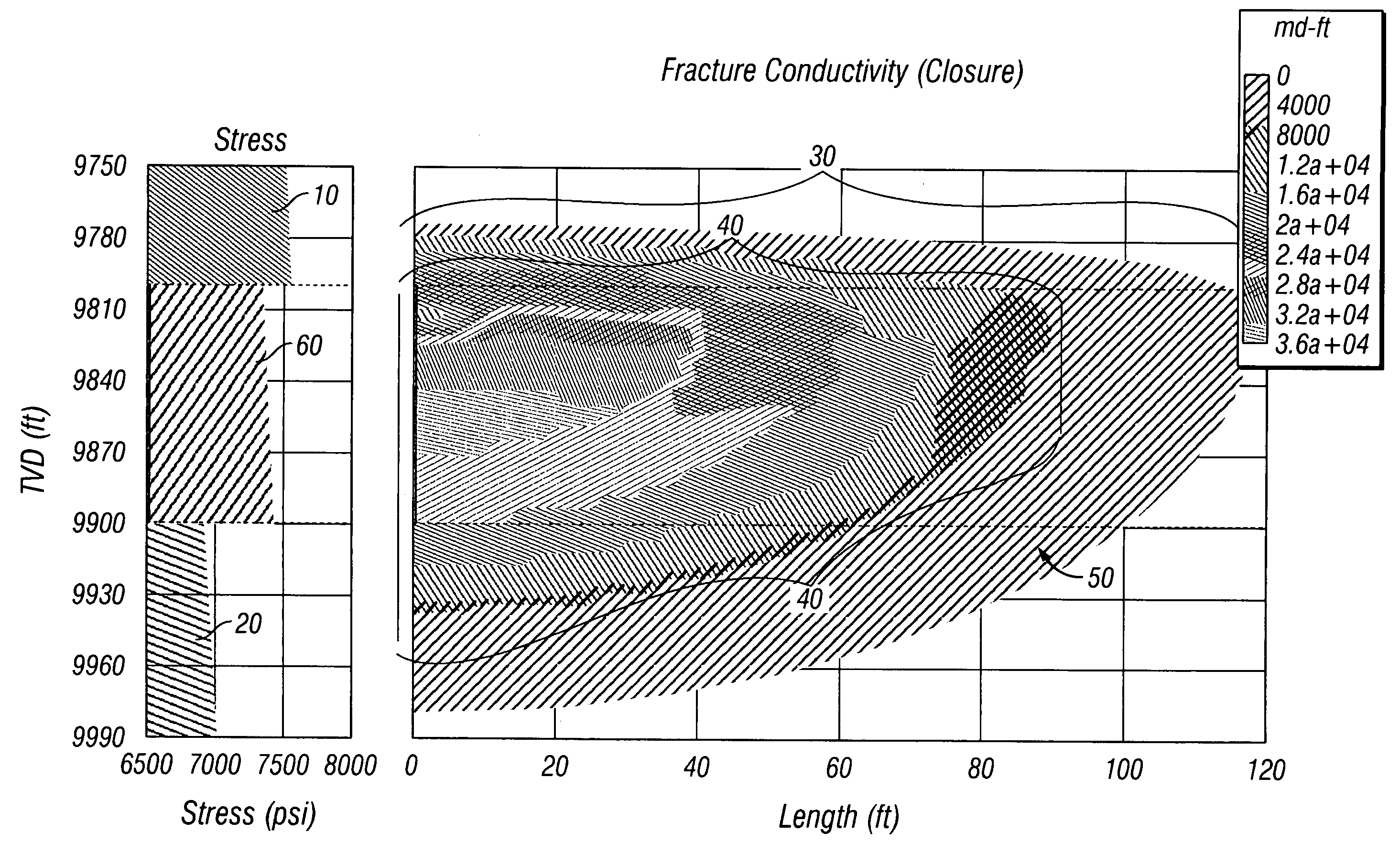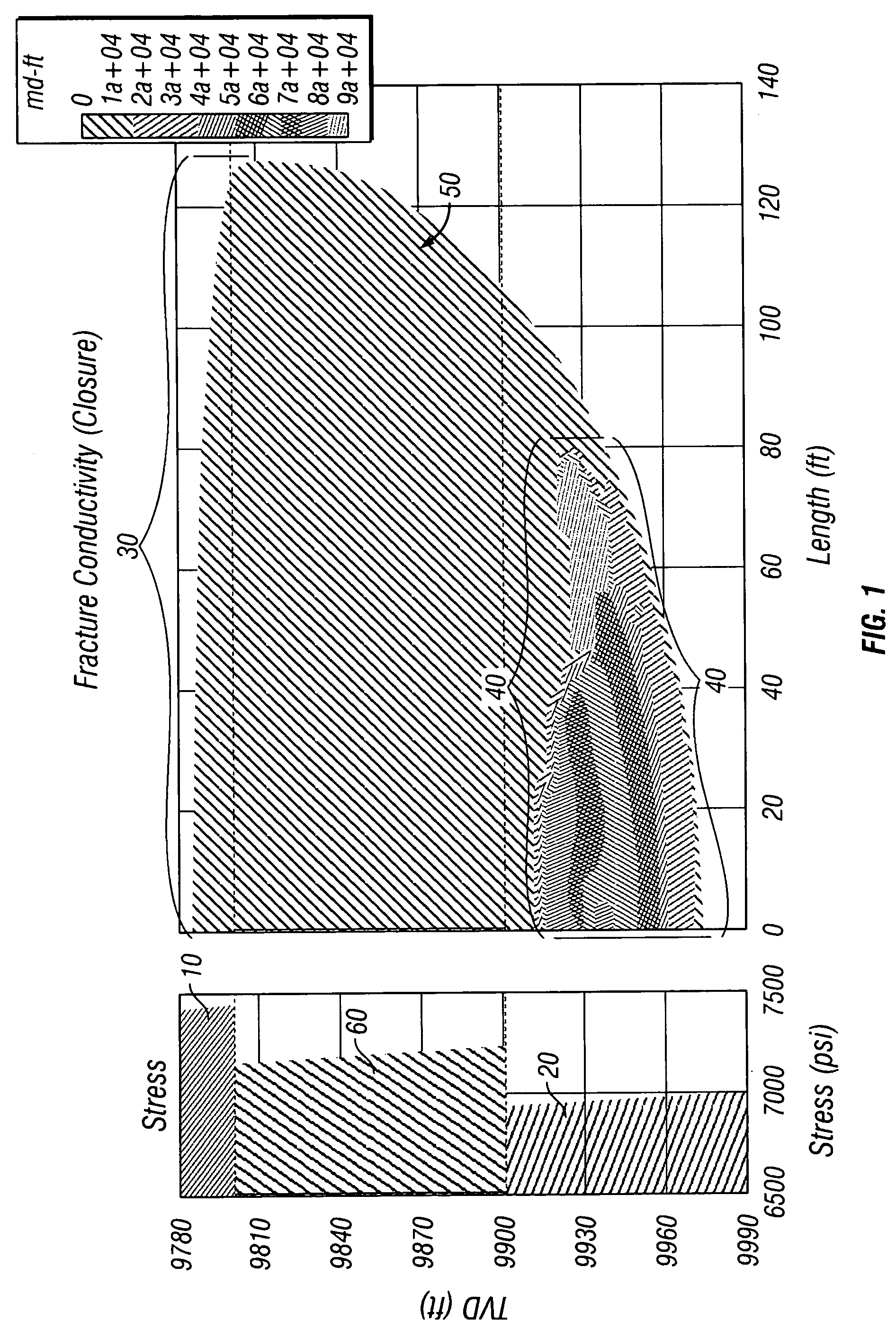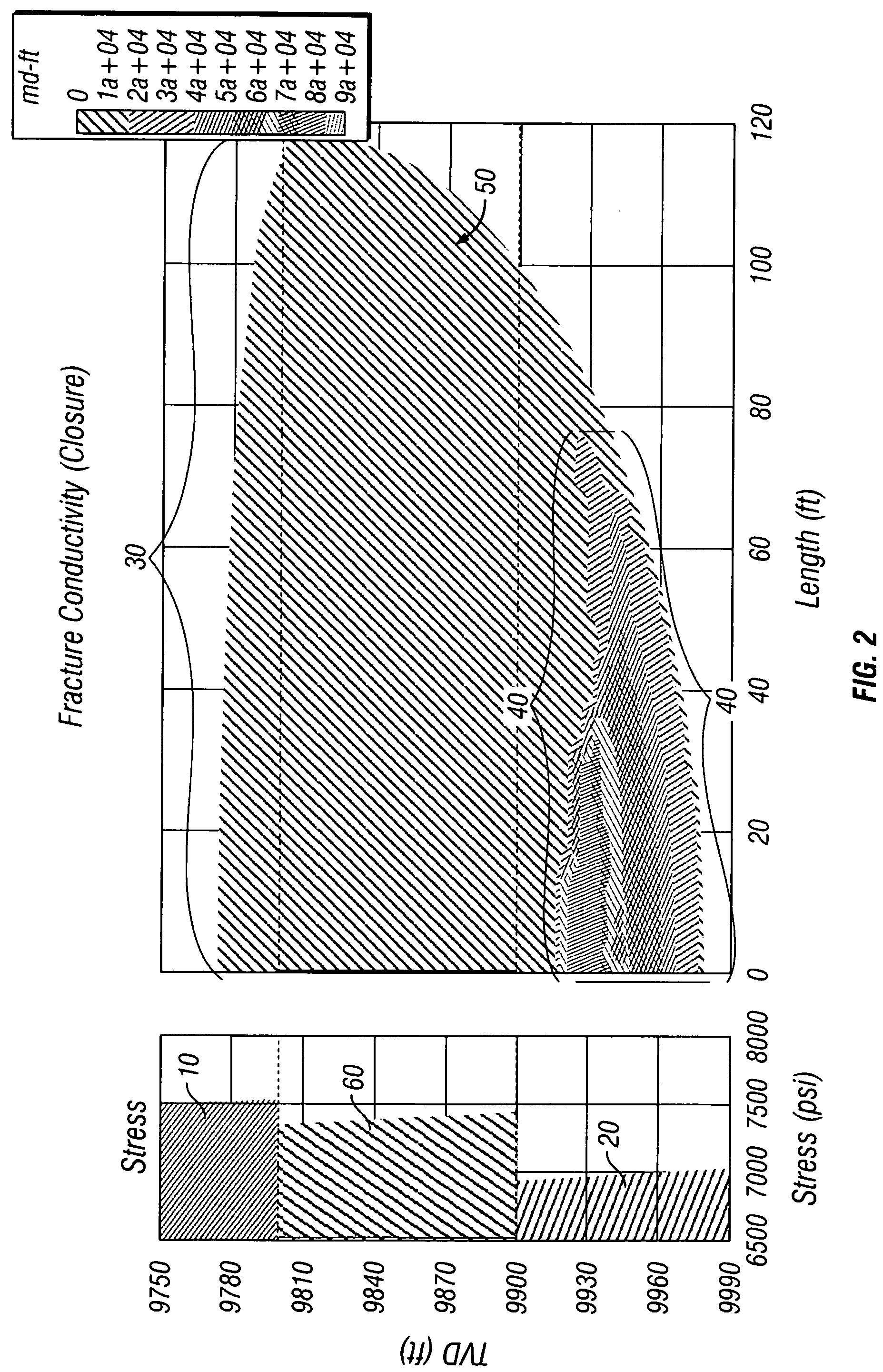Method of hydraulic fracturing to reduce unwanted water production
a technology of hydraulic fracturing and unwanted water, applied in the direction of fluid removal, chemistry apparatus and processes, borehole/well accessories, etc., can solve the problems of undesirable fracture height growth and inability to provide satisfactory solutions to unwanted water production
- Summary
- Abstract
- Description
- Claims
- Application Information
AI Technical Summary
Benefits of technology
Problems solved by technology
Method used
Image
Examples
examples
[0053]The Examples demonstrate the ability of the process of the invention to control water production.
[0054]A fracture was simulated using the Mfrac three-dimensional hydraulic fracturing simulator of Meyer & Associates, Inc. using a simple 3-layer isotropic homogeneous 0.1 mD permeability gas reservoir model, 40 acre spacing. The fracture was designed to be placed into the zone at a theoretical depth of approximately 9800 to about 9900 feet and the model was run in full 3-D mode. Since the Mfrac model does not make calculations for a partial monolayer, the conductivity of the proppant was artificially increased at a concentration of 0.5 lbs / sq. ft. at a rate of 50 barrels per minute (bpm).
[0055]Fracture conductivity between the proppant-packed fracture and that of the native reservoir, mathematically defined as:
(proppant pack permeability×fracture width) / (formation permeability×propped fracture half length),
is illustrated in the conductivity profiles of FIGS. 1, 2 and 3 after clos...
PUM
 Login to View More
Login to View More Abstract
Description
Claims
Application Information
 Login to View More
Login to View More - R&D
- Intellectual Property
- Life Sciences
- Materials
- Tech Scout
- Unparalleled Data Quality
- Higher Quality Content
- 60% Fewer Hallucinations
Browse by: Latest US Patents, China's latest patents, Technical Efficacy Thesaurus, Application Domain, Technology Topic, Popular Technical Reports.
© 2025 PatSnap. All rights reserved.Legal|Privacy policy|Modern Slavery Act Transparency Statement|Sitemap|About US| Contact US: help@patsnap.com



